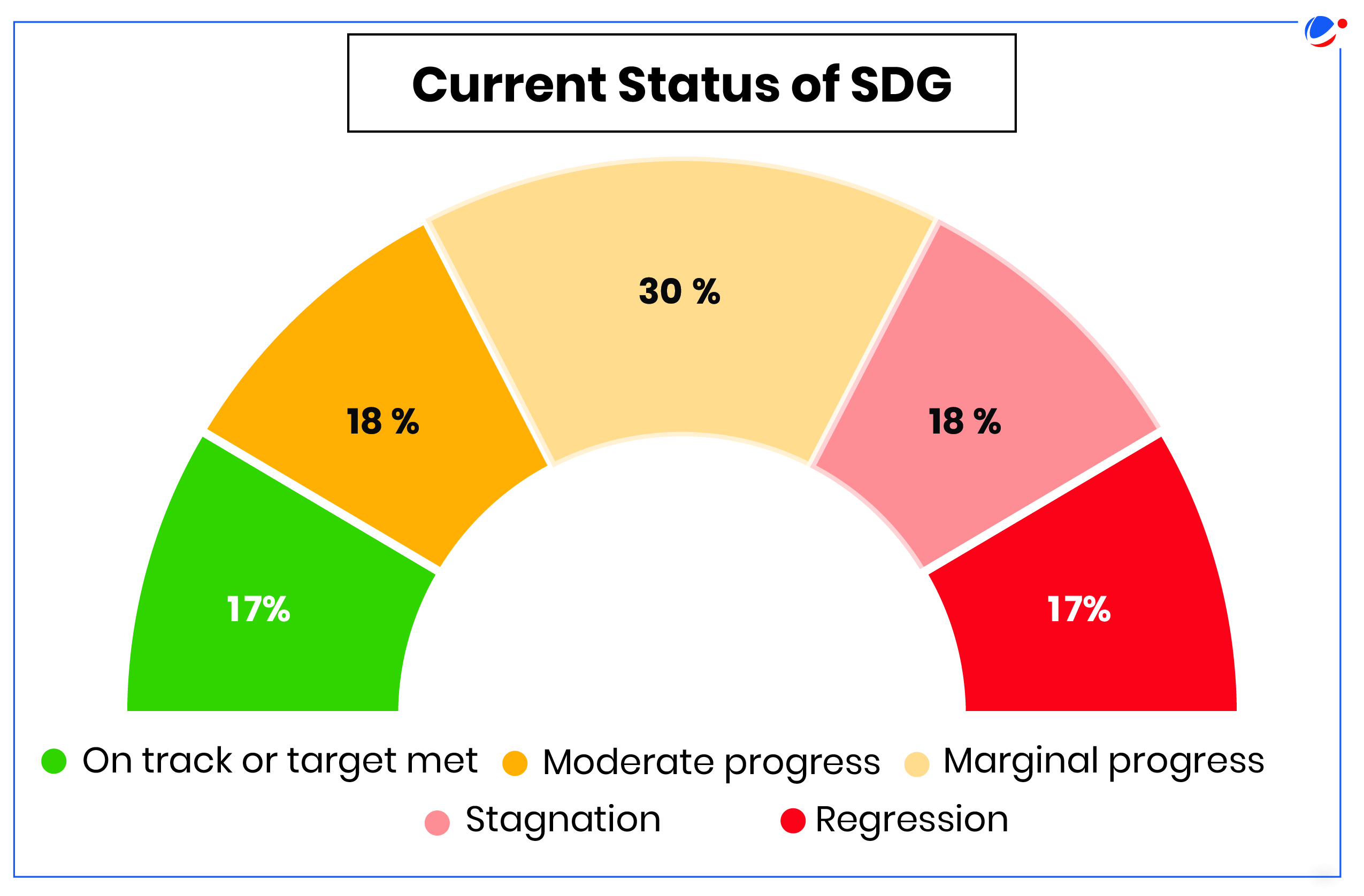Why in the News?
The Sustainable Development Goals Report 2024 is released by UN Department of Economic and Social Affairs (UN DESA).
Key findings of the report
- Overall progress across targets based on 2015–2024 global aggregate data.
- With less than one fifth of targets on track the world is failing to deliver on the SDG promise.
For details on current status of each SDG, refer to the Appendix.

About Sustainable Development Goals (SDGs)
- Background: The concept of sustainable development was described by the 1987 Brundtland Commission Report as development that meets the needs of the present without compromising the ability of future generations to meet their own needs.
- Subsequently, United Nations Millennium Development Goals (MDGs) were signed in 2000 which committed world leaders to combat poverty, hunger, disease, illiteracy, environmental degradation, and discrimination against women.
- Each MDG has targets set for 2015 and indicators to monitor progress from 1990 levels.
- SDGs are the blueprint to achieve a better and more sustainable future for all.
- They address the global challenges we face, including those related to poverty, inequality, climate change, environmental degradation, peace and justice etc.
- In 2015, all the countries in the United Nations adopted the 2030 Ageda for Sustainable Development, which sets out a 15-year plan to achieve the Goals and their related targets.
- It sets out 17 Goals, which include 169 targets to achieve them all by 2030.
Reasons of lagging in progress of SDG target
- COVID-19 Pandemic: It hampered global efforts to eradicate extreme poverty in SDG-1, undone nearly 10 years of progress on life expectancy which affected SDG-3 and SDG-4 by impacting global education.
- This has also disrupted international financial flows for clean energy in developing countries affecting SDG-7.
- Escalation of conflicts: For e.g., in Ukraine, Gaza, Sudan and beyond have left an unprecedented 120 million forcibly displaced people worldwide.
- Financial constraints: UNFCCC estimates that nearly $6 trillion is needed for developing countries' climate action plans by 2030, which will impact SDG-13.
- Environmental challenges and their underlying drivers including climate change, biodiversity loss, pollution, desertification and deforestation etc.
- For e.g., IPCC warns that up to 90% of corals could be lost by 2050 at 1.5°C of warming and up to 99% at 2°C impacting SDG-14.
- Disasters: Extreme weather events, including heatwaves, major floods, droughts, wildfires and tropical cyclones, have disrupted the lives of millions of people.
- From 2015 to 2022, this Least developed countries (LDCs) accounted for 6.9% of global reported economic losses from disasters impacting SDG-1.
India's status in achieving SDGs
|
Way forward
- Peace: Resolve ongoing armed conflicts through dialogue and diplomacy, and prevent future conflicts by upholding the principles and values of the Charter of the United Nations.
- Finance: Need more equitable, representative and effective international financial system.
- Must deliver concrete changes to the international policies through Summit of the Future, G20, international financial institutions, COP29 of UNFCCC etc.
- Climate change: The upcoming 2025 cycle of nationally determined contributions (NDCs) presents a chance for more ambitious climate action plans.
- Tailored Approaches: Countries should prioritize a subset of SDGs based on national priorities, capacities, and immediate needs.
- Create synergies between the different targets: For e.g., efforts to eradicate poverty must go hand in hand with improving education opportunities and gender equality.




